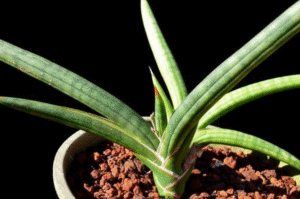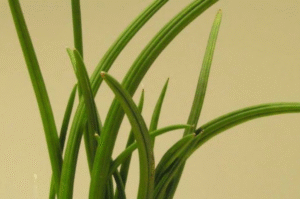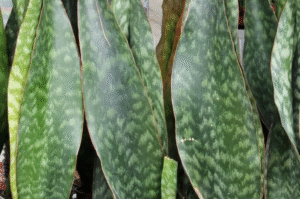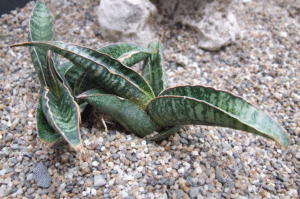Snake plants (Sansevieria), with their upright, sword-like leaves and minimal care requirements, have become household staples across the globe. But beyond the popular Sansevieria trifasciata lies a hidden world of rare snake plant varieties that plant collectors and interior design enthusiasts alike are eager to explore.
If you’re looking to elevate your collection beyond the common types, this comprehensive review dives into some of the rarest, most striking, and often underrated snake plant varieties, along with practical care tips and what makes each one so special.
Why Rare Snake Plants Are Worth the Investment
Rare snake plant varieties are not just about looks, they’re living pieces of botanical art. Many of these rarities offer unique leaf patterns, colors, and growth habits that can turn any shelf or corner into a conversation starter. These rare species are typically:
- Hard to find in local nurseries
- Priced higher due to limited propagation and slower growth
- In-demand among collectors and home stylists
But don’t worry! They’re still tough and low-maintenance, like their more common cousins.
1. Sansevieria Masoniana (Whale Fin Snake Plant)
Also Known As: Whale Fin, Shark Fin
Why It’s Rare: The single, massive, paddle-shaped leaf makes this a showstopper. Whale Fin is highly sought after due to its slow growth and dramatic leaf size.
Key Features:
- A leaf can grow up to 10 inches wide
- Deep green with dappled silver variegation
- Grows as a solitary leaf or small cluster
Care Notes:
- Requires bright, indirect light
- Water sparingly, once every 3–4 weeks
Pro Tip: Buy juvenile plants from trusted growers and be patient. They grow slowly but make a powerful statement over time.
2. Sansevieria Ehrenbergii ‘Samurai Dwarf’
Also Known As: Samurai Snake Plant
Why It’s Rare: Its compact, symmetrical growth and sword-like leaf arrangement set it apart. Unlike most snake plants, this one grows in a rosette form, which makes it great for tight spaces or desk setups.
Key Features:
- Short, thick, V-shaped leaves
- Green to blue-green leaves with red edges
- Grows under 6 inches tall
Care Notes:
- Prefers filtered sunlight
- Let the soil dry completely between waterings
Pro Tip: Excellent choice for bonsai lovers and collectors looking for something architectural.
3. Sansevieria ‘Silver Blue’
Why It’s Rare: This cultivar is not only rare but visually arresting. Its pastel silver-blue tones shimmer under light, creating a striking display unlike any other Sansevieria.
Key Features:
- Flat, silvery-blue foliage
- Slightly curved, symmetrical leaves
- Limited commercial propagation
Care Notes:
- Prefers medium to bright indirect light
- Needs excellent drainage, use a cactus or succulent mix
Pro Tip: The color can fade in low light. For the best display, place near a bright window without direct sun.
4. Sansevieria Kirkii ‘Coppertone’
Why It’s Rare: Its copper-bronze leaf tones set it apart from every other snake plant. The texture is rugged, almost reptilian, adding to its exotic feel.
Key Features:
- Long, wavy-edged leaves
- Color ranges from olive to copper-brown
- Unusual rough texture
Care Notes:
- Grows well in medium light
- Avoid overwatering; this variety is sensitive to root rot
Pro Tip: This variety is a slow grower, perfect for those who want a rare statement piece without rapid spreading.
5. Sansevieria Ballyi (Dwarf Sansevieria)
Why It’s Rare: Sansevieria Ballyi grows in small, tight clusters, making it perfect for terrariums and small indoor setups. It’s native to East Africa and isn’t often sold in typical garden centers.
Key Features:
- Miniature size, about 4 inches tall
- Cylindrical, pointed leaves
- Dark green with light striping
Care Notes:
- Water every 4–5 weeks
- Can tolerate low light but prefers indirect light
Pro Tip: Pair with other miniature succulents for a rare and space-saving combo.
6. Sansevieria ‘Banana’
Why It’s Rare: Named for its plump, curved, banana-like leaves, this cultivar is a collector’s dream due to its distinctive look and relatively new appearance on the market.
Key Features:
- Compact rosette with thick, crescent-shaped leaves
- Deep green with subtle striping
- Often stays under 10 inches in height
Care Notes:
Likes bright indirect light
Minimal watering, once a month is plenty
Pro Tip: Looks stunning in ceramic planters. Don’t overwater, or the ‘banana’ will split.
7. Sansevieria Cylindrica ‘Boncel’ (Starfish Snake Plant)
Why It’s Rare: This sculptural beauty fans out like a starfish and has a futuristic appeal. Its symmetrical, cylindrical leaves offer a modern, eye-catching touch to any decor.
Key Features:
- Fat, tubular leaves
- Radial, fan-shaped growth
- Light green with darker bands
Care Notes:
- Water every 3-4 weeks
- Prefers bright indirect light
Pro Tip: Can be propagated by leaf division. Perfect for a minimalist or Scandinavian-style interior.
How to Source Rare Snake Plants
Finding rare snake plant varieties can be a bit of a challenge, but it’s part of the fun. Here are a few tips:
- Online specialty nurseries: Look for reputable succulent or rare plant sellers
- Etsy & eBay: Great for collector-to-collector sales, but check reviews
- Local plant expos or swaps: Often a goldmine for finding rare varieties from hobby growers
Always confirm the plant’s identity before buying. Many rare varieties are mislabeled or confused with more common types.
Tips for Growing Rare Snake Plants Successfully
While most snake plants are hardy, rare varieties can have slightly different care needs. Follow these general guidelines:
- Use well-draining soil: A cactus or succulent mix works best
- Avoid overwatering: Let the soil dry out completely
- Provide bright, indirect light: Rare variegated types need more light for vibrant color
- Watch for pests: Mealybugs and spider mites can sneak in on collector plants
Consistency is key. Rare plants often grow more slowly, so patience is part of the reward.
Final Thoughts:
Absolutely! If you’re someone who appreciates the beauty of variety, rare snake plants offer a unique twist on a classic houseplant. They’re not just greenery; they’re statement pieces. While they may cost a bit more and require some patience to find, the visual payoff is unmatched.
Whether you’re a seasoned plant collector or a curious beginner, investing in a few rare snake plant varieties will not only enhance your space but also bring a deeper appreciation for this resilient and beautiful genus.






